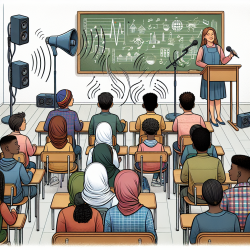Voice disorders present a unique challenge to speech-language pathologists (SLPs), requiring a nuanced understanding of vocal physiology and innovative therapeutic approaches. The fourth edition of "The Voice and Voice Therapy" by Daniel R. Boone and Stephen C. McFarlane offers a comprehensive guide that has served as a cornerstone in the field for over 17 years. This blog post aims to distill key insights from the book to help practitioners refine their skills and encourage further exploration into voice therapy research.
The evolution of voice therapy, as detailed in Boone and McFarlane's work, reflects a growing sophistication in diagnosing and treating a wide array of voice disorders. By categorizing voice disorders into "functional" and "organic," the authors provide a framework that simplifies the complex nature of vocal pathologies. This classification aids clinicians in developing targeted treatment plans that address the specific needs of their clients.
One of the most valuable aspects of "The Voice and Voice Therapy" is its practical approach to evaluation and intervention. The expanded content on voice evaluation, including airflow and air pressure measures, equips clinicians with the tools necessary to conduct comprehensive assessments. These assessments are crucial for identifying the underlying causes of voice disorders and tailoring therapy to individual client needs.
The inclusion of new facilitating approaches for voice therapy, such as Glottal Fry, Half-Swallow Boom, Head Positioning, and Tongue Protrusion, demonstrates the authors' commitment to evolving clinical practice. These techniques offer innovative ways to address vocal hyperfunction, a common issue among individuals with voice disorders. By integrating these approaches into their practice, clinicians can enhance their therapeutic arsenal and improve client outcomes.
Furthermore, the book addresses voice therapy for special problems, including disorders with unique characteristics and those existing in the presence of concomitant communication disorders. The addition of sections on "The Aging Voice," "Puberphonia," and "Diplophonia" broadens the scope of the text, making it an invaluable resource for clinicians working with diverse populations. These sections underscore the importance of a tailored approach to therapy, recognizing that voice disorders can manifest differently across the lifespan and in conjunction with other challenges.
Another critical area covered in the book is therapy for resonance disorders. The discussion on oral video endoscopy and speech obturators, along with general treatment guidelines, provides clinicians with a deeper understanding of how to manage hypernasality and other resonance issues. This knowledge is essential for developing effective interventions that improve speech intelligibility and quality of life for individuals with resonance disorders.
While "The Voice and Voice Therapy" offers a wealth of information on evaluating and treating voice disorders, it also acknowledges the need for additional resources in certain areas. The chapter on voice therapy for patients with cancer of the larynx, for example, highlights the complexity of working with this population and the necessity of consulting supplementary materials. This honesty about the limitations of the text encourages clinicians to seek out further education and training, fostering a culture of continuous learning within the field.
In conclusion, "The Voice and Voice Therapy" remains a seminal work in the field of speech pathology, offering both foundational knowledge and innovative therapeutic techniques. By integrating the insights from Boone and McFarlane's text into clinical practice, speech-language pathologists can enhance their ability to diagnose and treat voice disorders effectively. The book's emphasis on practical application, combined with its exploration of cutting-edge approaches, makes it an indispensable resource for both novice and experienced clinicians alike.
For those interested in delving deeper into the research and methodologies presented in "The Voice and Voice Therapy," I highly recommend accessing the original text. It is a treasure trove of information that can significantly impact your clinical practice and the lives of those you serve. To read the original research paper, please follow this link: The Voice and Voice Therapy.










